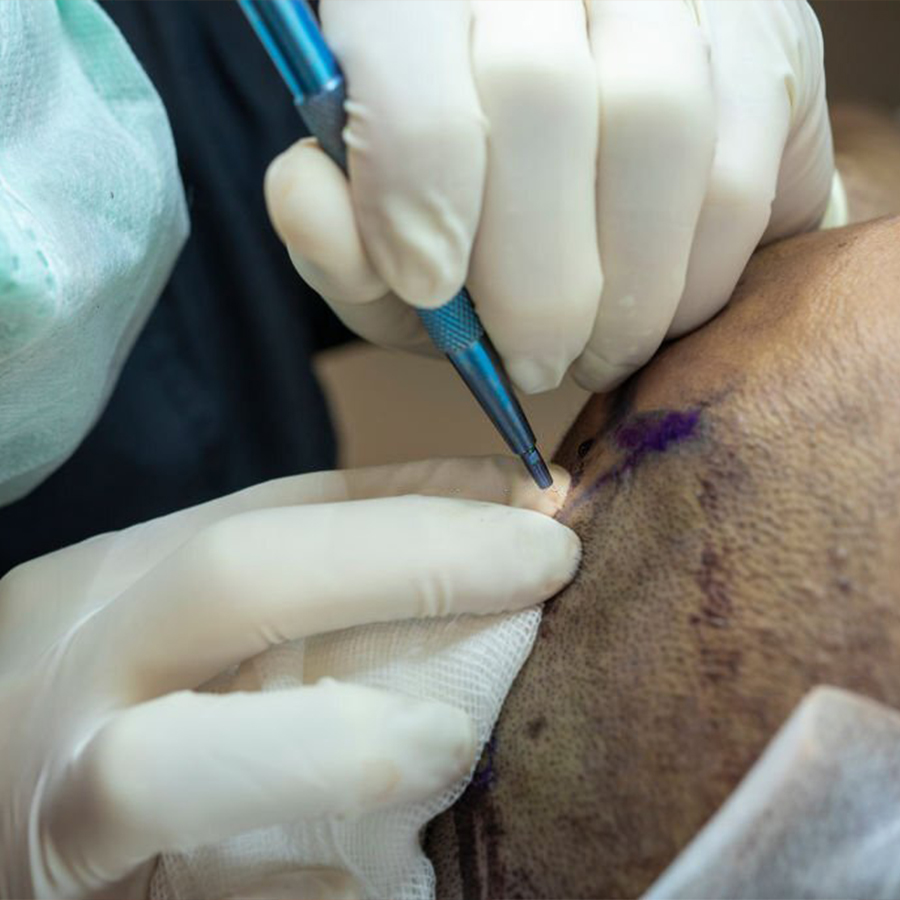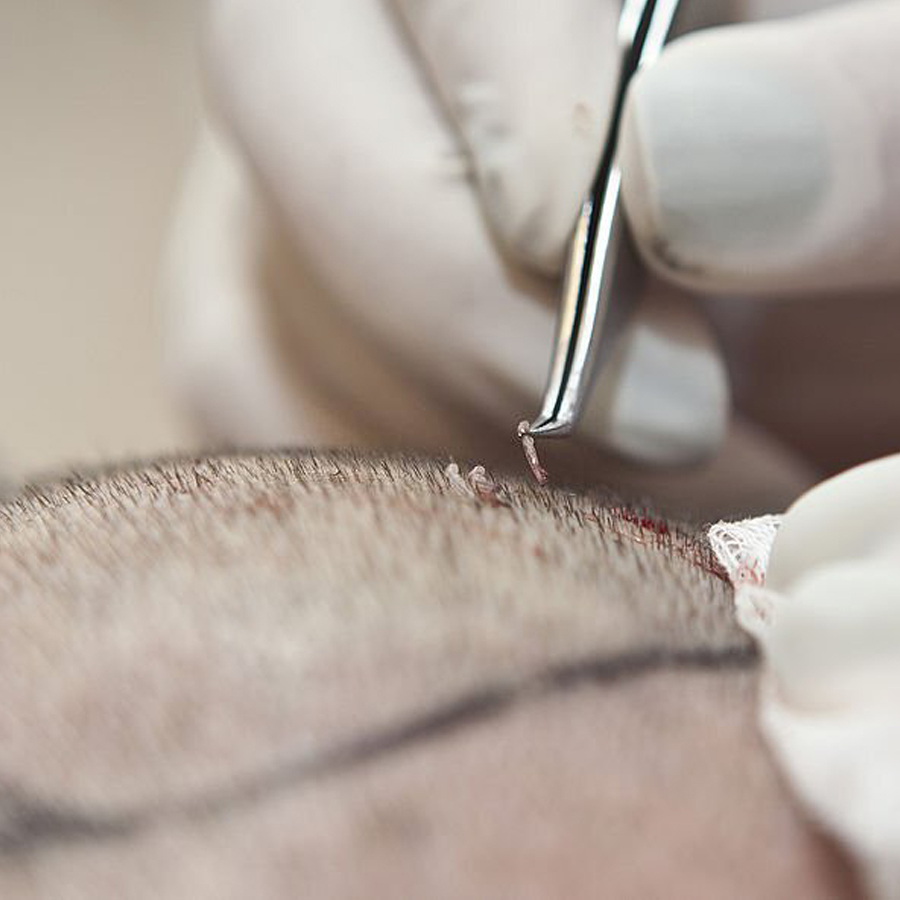
Hair transplantation is a surgical procedure that involves moving hair from one part of the scalp to another part of the scalp.
The goal of the procedure is to restore hair to an area where it has thinned or stopped growing altogether.
There are a variety of hair transplant techniques available, and the best one for a given person will depend on their individual needs and circumstances.

Follicular Unit Extraction (FUE) is a popular method of hair transplantation in which individual hair follicles are removed from the donor area (usually the back of the head) and transplanted to the recipient area (usually the front of the head or the top of the scalp).
The FUE method is considered to be a minimally invasive procedure that does not involve making a linear incision in the scalp.
During the FUE procedure, a small punch device is used to make a circular incision around each individual hair follicle.
The forceps is then used to remove the hair follicle from the scalp. Once the hair follicles have been extracted, they are then transplanted to the recipient area.
The procedure is usually done under local anesthesia, and the recovery time is typically shorter than with traditional hair transplant methods.

No linear scarring : since individual hair follicles are removed one at a time, there is no linear scar left behind.
Shorter recovery time : Because FUE does not involve making a linear incision, the recovery time is typically shorter than with traditional hair transplant methods.
High rate of survival : With FUE, the survival rate of transplanted hair follicles is very high.
Natural looking results : Since the transplanted hair follicles are removed one at a time, the results look more natural than with traditional hair transplant methods.
It's important to note that FUE is not suitable for everyone and a proper consultation is needed to determine if this is the correct hair transplant method for you.
The ideal candidate for FUE is someone who has enough hair in the donor area to spare for transplantation, and who is looking for a relatively small number of hair follicles to be transplanted.

Sapphire hair transplant is a type of hair restoration procedure in which individual hair follicles are extracted from a donor area of the scalp and transplanted to a recipient area where hair is thinning or missing.
The procedure gets its name from the use of a sapphire blade, which is a specialized instrument that is used to make very precise and fine incisions in the scalp.
The sapphire blade is said to cause less trauma to the surrounding tissue, which can result in faster healing and less discomfort for the patient.
One of the main advantages of sapphire hair transplant is that it can produce very natural-looking results.
Because the incisions made by the sapphire blade are so precise, the transplanted hair follicles can be placed in very specific locations and angles, which can mimic the natural growth pattern of the patient's own hair.
Additionally, because the sapphire blade is so sharp, it can cut through the skin without crushing or damaging the hair follicles, which can help to improve the survival rate of the transplanted hair.
The procedure can be performed using several methods of hair transplant such as FUE, FUT.
It is important to understand that the sapphire blade itself is not the only factor determining the quality of the results, the skill of the surgeon, aftercare and the overall health of the patient also play an important role.
The doctor will check the density and quality of donor hair and will evaluate the patient's overall health and medical history to make sure that the procedure is safe.
Recovery period after the sapphire hair transplant typically varies depending on the extent of the procedure, the patient's healing process, but generally, patients can expect some mild pain and discomfort, swelling, and redness in the treated area for a few days after the procedure.
Most people can return to work and other normal activities within a week or so, but exercise should be avoided for several weeks.
It is also important to note that after hair transplantation, the transplanted hair will fall out and then regrow.
It may take several months to see the final results of the procedure. Additionally, hair transplantation will not stop the progression of hair loss, so some people may require additional procedures in the future.
It is also important to maintain a healthy lifestyle, including a healthy diet and exercise routine, as well as to avoid smoking, excessive alcohol consumption, and using certain medications that may contribute to hair loss.
In addition, it is important to protect the transplanted hair from sun damage and other environmental factors, as well as to use gentle hair care products.
To ensure optimal results and minimize any potential complications, it is important to follow your surgeon's post-operative instructions closely.
It's also important to note that hair transplantation is not a one-time solution and in some cases multiple sessions might be required to achieve the desired results.
In summary, hair transplantation is a highly effective way to restore hair to areas of the scalp where it has thinned or stopped growing altogether.
However, it is not suitable for everyone and it is important to have realistic expectations and to select a reputable and qualified surgeon to perform the procedure.